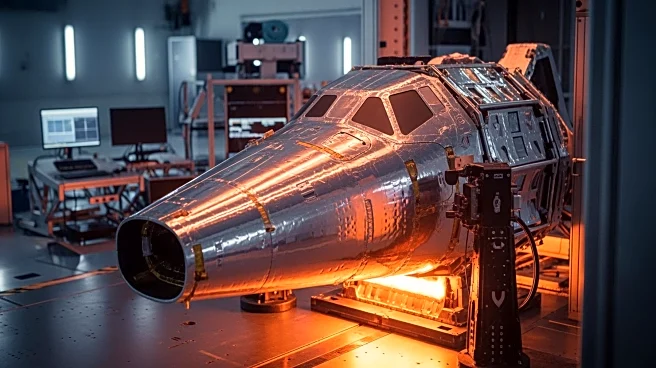What's Happening?
On October 13, 2025, SpaceX conducted a high-risk test flight of its Starship system, deliberately exposing the spacecraft's stainless-steel frame to extreme reentry conditions by removing sections of its heat
shield. This test aimed to stress the thermal protection design and gather data on its performance under failure conditions. The mission marked the final use of Starship's second-generation hardware, with plans to transition to the third generation, Starship V3, which will feature enhanced capabilities for orbital refueling and interplanetary missions.
Why It's Important?
SpaceX's approach to testing complex systems in flight rather than relying solely on simulations reflects its philosophy of data-driven iteration. This methodology allows for rapid design evolution and has implications for the future of reusable heavy-lift systems. The successful completion of this test provides valuable insights into the thermal protection design, which is crucial for the vehicle's rapid reuse and long-term viability in interplanetary missions.
What's Next?
SpaceX plans to launch the first flight of Starship V3 in early 2026, featuring enhanced propellant capacity and orbital refueling support. This variant is expected to attempt full orbital insertion and serve as the first platform for cryogenic propellant transfer in orbit, a capability essential for NASA's Artemis program. The coming year will test whether Starship V3 can meet the requirements for lunar missions and interplanetary travel.
Beyond the Headlines
The deliberate exposure of Starship's structural elements to extreme heat conditions highlights SpaceX's commitment to pushing the boundaries of space technology. This test underscores the importance of iterative risk-taking in advancing space exploration capabilities. The development of Starship V3 represents a significant step towards achieving fully reusable heavy-lift systems, with implications for government spaceflight, commercial launch, and interplanetary missions.












